It’s a source of some amusement to me that John Howard Payne, lyricist of the immortal ‘Home Sweet Home’ (“Be it ever so humble, there’s no place like home…”) spent his youth in East Hampton. In fact, the small colonial residence of his grandfather, where he lived, is now a museum, sitting on Main St. amongst a line of colonial and Victorian properties. But East Hampton is hardly known for its history. Programs such as ‘Royal Pains’ and ‘Revenge’ as well as a plethora of films, including ‘Something’s Gotta Give,’ continue to perpetuate the image of ‘The Hamptons’ as the enclave of the rich and famous. That’s hardly true of the entire population! And it certainly wasn’t always true…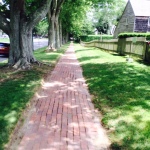
As with all of the Americas, indigenous peoples were present long before European settlers made an appearance. The locals then were a part of the Algonquin nation, generally called Montauketts. In the late 17th Century, Puritan and other colonists from Connecticut moved down to the Long Island area. A smaller island off shore was sold to one Lion Gardiner for a large black dog, some powder with shot, and a few Dutch blankets. Today the taxes alone on the island are purported to be over 2 million dollars…and the island continues to be owned by descendants of the Gardiner family. In any event, Gardiner’s Island was the first English settlement in what became New York.
Gardiner built a second home, in what is now East Hampton, in 1654.
Earlier, in 1640, Puritan families had moved down from Massachusetts to the Southampton area, escaping strict laws and seeking more land, and had migrated east to what they then called Maidstone in 1649. They signed a treaty with both the Montaukett and Shinnecock peoples, buying the land for 20 coats, 24 looking glasses, 24 hatchetts, 24 knives, 24 hoes and 100 “muxes.” They then secured a patent or colonial charter from Governor Richard Nicholls in 1666. The village of East Hampton subsequently developed from 34 allottments of 8 to 10 acres since life here in the colonial period was based on farming. Note that the town and the village are 2 distinct entities; today, East Hampton Town includes the villages of Wainscott, part of Sag Harbor, East Hampton, Napeague, Amagansett and Springs.
The main government during the colonial period was the town council. The town records give some idea of the concerns of the people:
“November 27 agreed that the Indians shall cut no wood nor timber nor live in…field.”
“1756 October 27 The Trustees did then chuse, nominate and appoint John Dayton by mager vot for to sue, prosecute and recover the damage the Town shall or may receive from any person that shall at aney time presume to hunt after Deere or fowl in the Town ship of Easthampton the person not being…an inhabitant of said town.” (sic)
“Novem 9th agreed with ye Indians for to tak up with Seven pounds for the damage their hogs had don in rooting up ye land…” (sic)
There is also a list of charges to the Town, such as “1733 to Ichabod Leek for warning ye trustees 1’6” –though no mention is made of what he was warning them about!
During the Revolution, the village was occupied by the British from 1776 to 1783. Various myths and stories come out of this period but my favorite is that in 1776 a “certain Stirring Dame” of East Hampton threw a hot pudding filled with berries at a foraging party of British soldiers. The site of this incident is still known as “Pudding Hill.” My own street, Whooping Hollow Rd., also has an interesting legend: originally called, “Whooping Boy’s Hollow,” it tells of an Indian boy who was scalped on the road by hostile Indians. His whooping spirit still supposedly haunts the area.
Over the years, the region developed as a farming, fishing and whaling community. Working class families moved into Springs (never use “the”!) and were called by the name of Bonnackers, referring to the fact that Springs is on Accabonac Harbor. They have their own dialect, now mostly softened by the New York infiltration, which developed from 17th C England. Sadly, the local fishing industry, which was their main occupation, has dwindled, and many now work in various fields related to tourism, while Springs also supports a large Latino community.
So when did the rich and famous move in? In the late 19th century Southampton proved a draw for the wealthy of the Gilded Age and is still known as the Hampton of ‘old money.’ It’s streets have signs protesting against wearing bathing suits in town, and an elegance of a by-gone era still exists in the old mansions that line the shore. East Hampton remained largely rural until the railroad came in 1880. When the Maidstone Club was built in 1891, the wealthy came along; to this day, membership is extremely difficult to obtain. East Hampton drew a more artsy crowd in the 1950s when artists such as Jackson Pollock, whose house is open to the public, and buddies like Warhol, Motherwell, Kline and so on came out to work in the peace and quiet of the countryside. And so, East Hampton developed as the Hampton of the celebrities, with the Artists and Writers’ baseball game a highlight of the summer season. I’ve gone through a door with Catherine Zeta Jones while Michael Douglas looked on, been in restaurants while Salman Rushdie, Martha Stewart, Gabriel Byrne or Renee Zellwegger dined nearby, shopped when Alec Baldwin has popped in, attended a benefit basketball game with Jay-Z, and stood outside the movie house with Steven Spielberg, with whom I’ve also exchanged a few words while canoeing out on Georgica Pond. Charity events go on throughout the summer as do art and antique shows, theatre, church fairs and readings by well known authors. Polo is played and The Hampton Classic Horse Show is a major event. And these days, the Town Council deals with a mixed population in a growing community, while trying to maintain the rural atmosphere of a town with very limited land, caught as it is between Long Island Sound and the Atlantic Ocean. The Ladies Village Improvement Society (known as LVIS) keeps a stern eye on any change not consistent with the historic setting.
As quite an ordinary person I feel lucky to live here.
The library is unlike most libraries, having been built rather like a Tudor home complete with grand staircase and sitting area by a fire. The two windmills and other historic buildings are beautifully kept, as is the old cemetery near the village pond. It’s a beautiful village in which to live. Yet when I bought my home, 16 years ago, 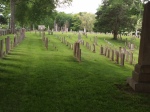 the village had lovely little ‘Mom and Pop’ stores and was relatively uncrowded after Labor Day. Nowadays the village is given over to stores the likes of Gucci, Tiffany, Ralph Lauren and Hermes, as if someone might have a handbag emergency—and they mostly close down for the winter months. The beaches are public but parking there is not; residents have to obtain permits with identity to show they live here, and there is a strict division between town beaches and village beaches, depending on where you live. Restaurants go in and out of fashion and in and out of business in the twinkling of an eye. The general aura is that the summer visitors matter the most.
the village had lovely little ‘Mom and Pop’ stores and was relatively uncrowded after Labor Day. Nowadays the village is given over to stores the likes of Gucci, Tiffany, Ralph Lauren and Hermes, as if someone might have a handbag emergency—and they mostly close down for the winter months. The beaches are public but parking there is not; residents have to obtain permits with identity to show they live here, and there is a strict division between town beaches and village beaches, depending on where you live. Restaurants go in and out of fashion and in and out of business in the twinkling of an eye. The general aura is that the summer visitors matter the most.
In my forthcoming book, Dances of the Heart, East Hampton is portrayed in the way most people think of it, a glitzy summer resort, home of the wealthy. But that said, my own preference is to be here in the late autumn or early spring when the weather is good but the crowds are gone—and the only thing to contend with are those descendants of the ‘Deere and fowl’—mainly wild turkeys—that the settlers didn’t want shot.
(One final note to my western readers: John Howard Payne eventually lived with the Cherokee, coming to a theory that they were the lost tribe of Israel…)

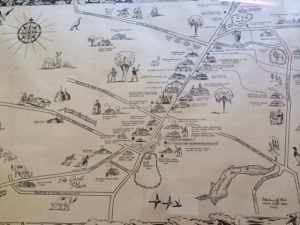
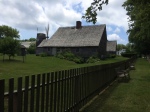
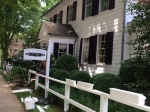
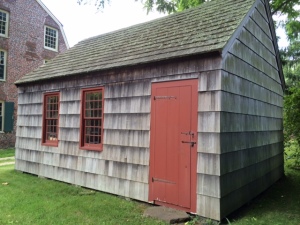



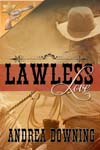












Golly, Andrea, you sure covered it all in one relatively short post. I know nothing about the history of “The Hamptons” (is that politically correct?) so I found your overview enlightening. It strikes me as slightly odd that when all those early civilized events were taking place up your way that the Spanish hadn’t crossed the Rio Grande into what is now Texas. Kind of puts everything into prospective. Great post!
LikeLike
Hi Karen, interesting that you should ask if using ‘The Hamptons’ is politically correct. In fact, I’ve used it because that is how everyone knows the area but if you have a home here you don’t say that, you refer only to the village in which you live. And, to be ultra snooty, no one ever says I’m going out to the Hamptons (when in NYC) People generally say, I’m going out to the beach…and expect others to know which beach they’re talking about!!!
LikeLike
Wonderful post, Andi, about the history of East Hampton and your comparison to today’s life there. From my early “upstate” New York history schooling, I recall something about Puritans moving further south from Massachusetts to avoid the strict laws of the time. And that the British during the Revolutionary War occupied a good part of land now known as East Hampton. Thank you for letting my mind wander back to the time when I was a student of New York State history, which was a mandatory class in schools. I’m proud to be from a state that is rich in its history, and it always amazes how much more I have to learn…
LikeLike
Glad you enjoyed it, Alice. Learning all this was fascinating to me, especially since the names on streets and roads here cropped up as real people in the history I read. For instance, there is a Dayton Lane named for the man in the quote from the town records. Also, of course, it was fun to learn some of the stories such as the woman who threw the pudding at the British.
LikeLike
Lovely balanced post. I’m fascinated by the hamptons and reading your description of hang bag emergencies and fashionable restaurants it does sound like Revenge or Something’s Gotta Give!!
I’m interested to know – if East and Southampton are so exclusive where does the workforce live?
LikeLike
That Latino community I mentioned in Springs, a village in East Hampton township, provides quite a large part of the workforce and the Hamptons would fall apart without them,quite honestly. However, most of the workforce lives in Riverhead, the capital of Suffolk County about 45 minutes away if traffic is decent. At 4pm every day, every season, you can see a line of traffic leaving the Hamptons and heading out down Route 27 back to Riverhead. Thanks for stopping by!
LikeLike
Interesting post! I knew nothing about the area, and assumed it was all rich, snooty people. I’d love to visit the East Hampton Library! Sounds like the place to be when a Nor’easter rolls in.
LikeLike
Yes, everyone seems to think the Hamptons is full of rich folks but, in fact, they’re a very small part. Most of us out here are just ordinary families who, perhaps, are lucky enough to have a house out here. The highway is the division for the most part–the wealthy live south of the highway, near the beach. Thanks for stopping by, Ashantay.
LikeLike
What a terrific post, Andi. You gathered a lot of great information. Ironic that when many towns’ Mom and Pop businesses leave, the towns shrivel. But in your area–they’re replaced with the likes of Gucci. And your shopping days–littered with celebs! 🙂
LikeLike
Glad you enjoyed the post Barb. To be honest I’d prefer fewer celebs and more affordable shopping!;-). Thanks for stopping by!
LikeLike
What a lovely and well written history lesson and tribute to your home. I loved the pictures and the unique history to the area. Thank you for sharing! 🙂
LikeLike
What kind words, J.C. Thanks so much!
LikeLike
What a terrific post! I am intrigued with just about every word you wrote. What a history! And yes, I too thought the place was filled with overpaid snoots LOL. One fact I totally loved is that an actual human being had the name Ichabod! Great job today….and best wishes on the book.
LikeLike
I’m so glad you enjoyed this, Tanya, and found it intriguing. As for ol’ Ichabod, when I saw that in the Town Records I knew I had to include it. As with most people, the only other Ichabod I’d ever heard of was Ichabod Crane from the Sleepy Hollow story. Thanks so much for your kind comment.
LikeLike
As a student of history I loved your post and how fascinating it must be to live in East Hampton. Thanks you for sharing your home town with us.
LikeLike
You’re very welcome, Marlow, and thanks for stopping by.
LikeLike
Very interesting, Andi. I knew nothing of the history of East Hampton and truth to tell, never gave it any thought. It sounds like a marvelous place, especially in those spring and fall months when the crowds are gone. Every place in America has a fascinating history. Indeed, I suspect, everyplace in the world. I am looking forward to reading Dances of the Heart. I have to wonder, since you love your home and the city and also love the small towns and ranches in the west, which would you chose, if you had to make a such a choice.
LikeLike
I would definitely choose the west, Eunie–more space, mountains, desert, fewer people(!) and, of course, cowboys!! Sadly, my daughter must stay in the east and my primary concern is to be near her. Maybe one day I can convince her to move west, though…
LikeLike
Great informative post. I thought the Hamptons were all the wealthy! Loved the pictures with your post.
LikeLike
It seems a great many people think the Hamptons are just a bunch of wealthy people. For the numerous families who live there, it’s a rather sad fact that store rents and hence shops reflect that belief. Thanks for stopping by, Sydney!
LikeLike
Dear Andrea, I was very excited to see your beatiful historical map of East Hampton, but was disappointed that it is not clear enough for me to read most all of the streets or names on the map. Rev. Thomas James, Jr. was my 8th Great Grandfather, and I believe is see his house listed on it, but that is about all I can make out. I have found written descriptions about the location of his home, but most of the old maps I have found are all different, and none are old enough to list him. Would it be possible to see a larger map? Thank you for your time, and your wonderful posts.
Marjorie
LikeLike
Hi Marjorie, thanks so much for stopping by. Unfortunately, I am at my home in NYC at the moment and the map is at my place in East Hampton, but I do have the photo I took. I’ll send that on to you in case it is of some help, though i doubt it can be enlarged with any clarity, quite honestly. I should be back in EH mid-Dec. and if you drop me an email reminder, I’ll try to take a better photo to send on to you. Thanks again for your interest.
LikeLike
Very interesting! As you say we definitely need to visit Long Island. You paint a very different picture that I had in mind. Wonderful stories about the history. Wonderful post.
LikeLike
Thanks Cindy. It does have its charms. I’m sorry I didn’t manage to include some photos of the windmills as well, since they add some atmosphere to the whole scene–quite different from the windmills down in Texas!
LikeLike